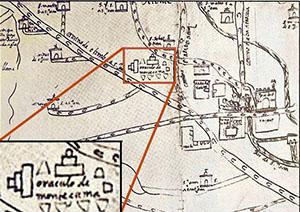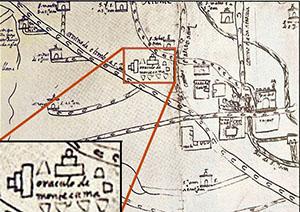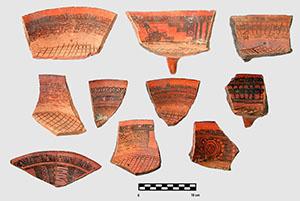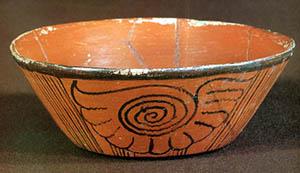
The Aztecs at Teotihuacan
By Dr. Susan Toby Evans of Pennsylvania State University
We know that Teotihuacan was the most important site in all of ancient Mexico in the Early Classic period (about AD 300 to 600), but was it also important after that, such as in the Aztec Period of the 1400s and the early 1500s?
While the town known to the Aztecs as Teotihuacan was a much smaller place than the Early Classic city—and much smaller than the great Aztec capital Tenochtitlan/Mexico City—it was strategically important as a regional political capital. The ruined pyramids were revered as the place where time began, where the gods sacrificed themselves to create the life-giving sun. Montezuma was supposed to have made a pilgrimage to the pyramids of Teotihuacan every 20 days (though it is probable that he usually sent emissaries to fulfill his ritual obligations).
Nonetheless, the Teotihuacan Valley was an essential part of the Aztec empire, a vital route to the Gulf of Mexico lowlands and to obsidian sources critical to the production of tools and weapons. The Teotihuacan Valley’s importance to the Aztec empire was proven when it became the first of the core provinces to secede from the empire, siding against Montezuma in a nasty civil war about five years before Cortés reached Tenochtitlan/Mexico City.
Knowing about these historical events helps us to understand the course of empires. Much of our information is from documentary sources, including reports by the Spanish and native chroniclers of the conquest period and thereafter. One map from shortly after the Spanish conquest shows the ruined pyramids of Teotihuacan as markers. Other information is archaeological, including the results of survey and excavations of Aztec period sites in the Teotihuacan Valley. Aztec occupation around Teotihuacan is recognized by the distinctive orange and red ceramics that are very different from the Classic-period ceramics of Teotihuacan.
As an archaeologist, I value the Teotihuacan Laboratory, now administered by ASU, as an important repository of collections from the Aztec site I excavated, Cihuatecpan (“Woman Palace”). These collections have been used by my research team and by other scholars. They cannot be replaced, both in the literal sense that archaeology, as a practice, culls a unique material record, and also in a larger sense: land development has destroyed other sites of this type in the Teotihuacan Valley. The Teotihuacan Laboratory is vital to our continued understanding of the city of Teotihuacan and its surrounding region, and Arizona State University is to be commended for its indispensable role in maintaining so many irreplaceable archaeological collections and providing space for their study.


